Engaging In Conceptual Development
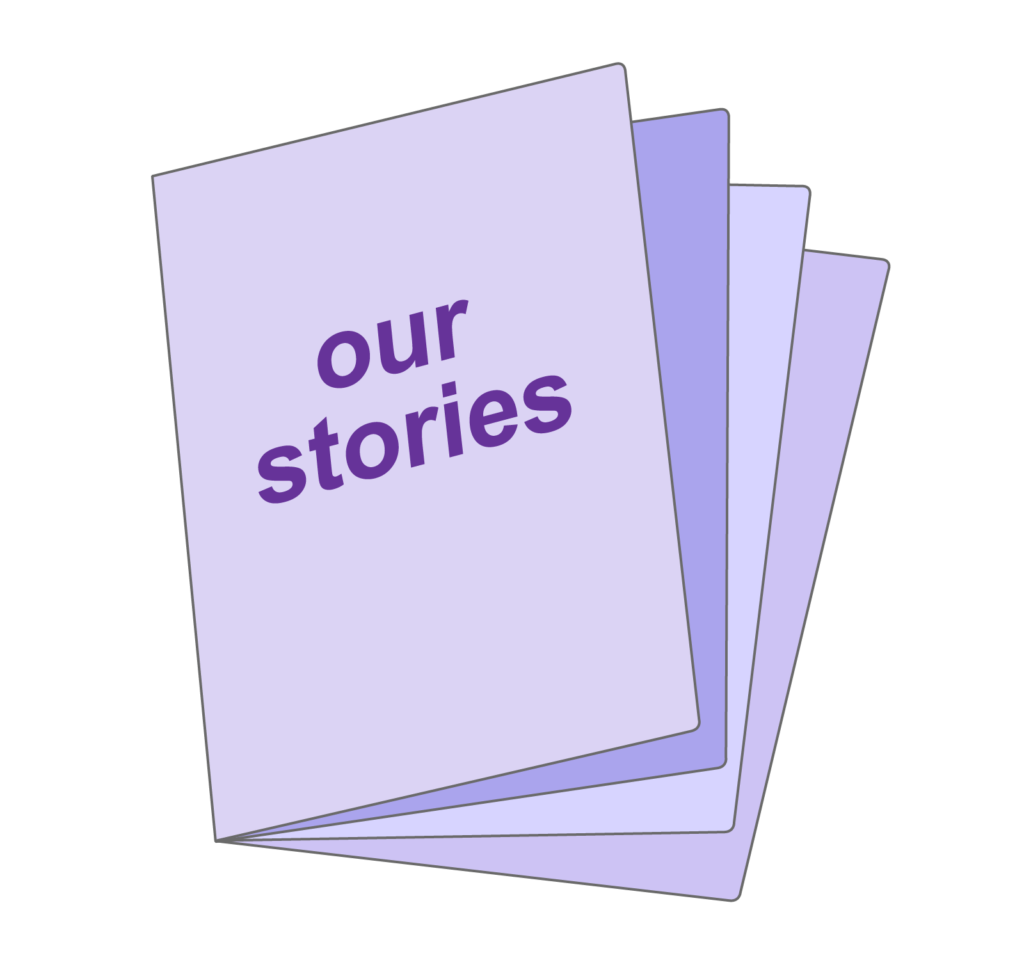 We understand our lives through the stories we tell. Sometimes, these stories are full and robust. Other times, missing are those thoughtfully interwoven threads informing us how to best navigate the realities we find ourselves in.
We understand our lives through the stories we tell. Sometimes, these stories are full and robust. Other times, missing are those thoughtfully interwoven threads informing us how to best navigate the realities we find ourselves in.
We rely upon our threads of information — facts, past and present experiences, as well as future expectations — to envision our possible paths. Most often, we navigate with incomplete information and “best guesses,” taking risks to actualize those emerging stories we value.
Immersed in the circumstances permeating our lives, we often struggle for the mind-space to thoughtfully contemplate the situations we find ourselves in. Through the search to understand what we have learned, the more thoughtful we can be, the more clearly we can see.
Perceptions
As we move along our journey, the unfolding of events guide our perceptions. Perceptions — our uniquely woven intersection of facts, experiences and feelings — shape how we interact within ourselves and our surrounding environment.
When we seek to discover where our facts, experiences, expectations and feelings share common ground, we allow the richness of interpretation to translate our threads of information into strands of perception.
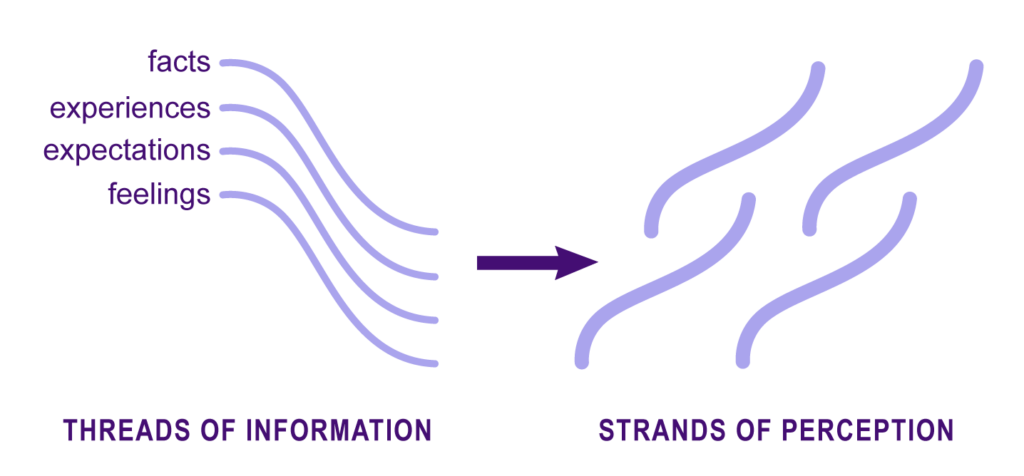
We translate our threads of information into strands of perception.
A curious toddler sees the pretty, shiny object on the Christmas tree and feels compelled to reach for the ornament; an adolescent steps outside, feeling the blistering wind and heavy rain realizing today, the school bus is more appealing than the half-mile bike ride to school.
Perspective
By weaving our different strands of perception together, we develop perspective: A high school student anticipates her mother’s supportiveness when describing how worried she is about an upcoming biology test, because her mother helps her feel more reassured and positive about her studying.
The perspectives we navigate from allow us to faithfully compare the accuracy of our perceptions with reality. The more accurate our perceptions, the more reliable our perspectives are, for engaging the circumstances we find ourselves in.
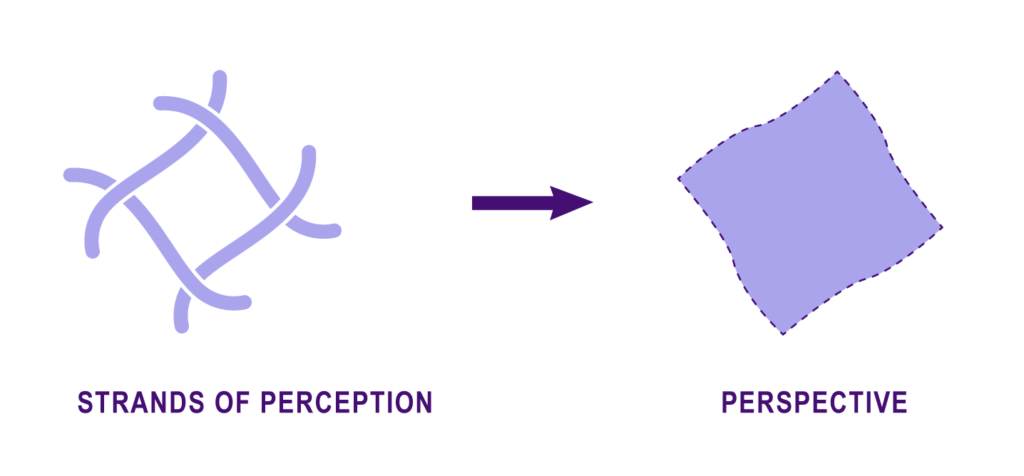
By weaving our strands of perception together we develop perspective.
Perspectives and Reality
Our stories reveal how we entwine our perspectives into themes across the passage of time. Do our perspectives, imprinted with our interwoven strands of perception, hold together when compared with reality?
The project manager thought the schedule was too rushed for achieving the high quality work possible, and sure enough, the teams could not employ their talented capabilities when inhibited by the directive to complete the assigned tasks on time.
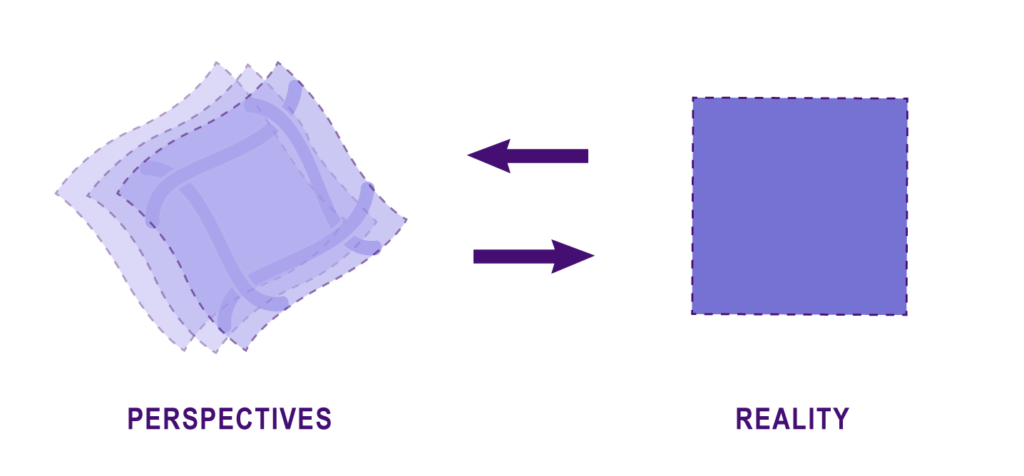
How do our entwined perspectives across time match up with reality?
Intuition
When we venture further into thoughtfulness we discover our perspectives share themes of relatedness, animating the messages inscribed within our stories. By intertwining our related perspectives together, we curiously seek to partake in the knowable but as yet, unknown.
Traversing the as-yet-undiscovered traces of connectedness across our related perspectives, we cultivate intuition:
A gifted mathematician intuitively senses the implications of an equation before a theorem is complete; an attentively attuned parent intuits an infant’s needs, even when not in close proximity.
Intuition arises when we begin to discern recurring patterns from our accumulated connections of information, perceptions and perspectives. By illuminating a pathway towards knowledge, our intuition guides us to reorient our perceptions, and then our perspectives, into a more unified convergence.
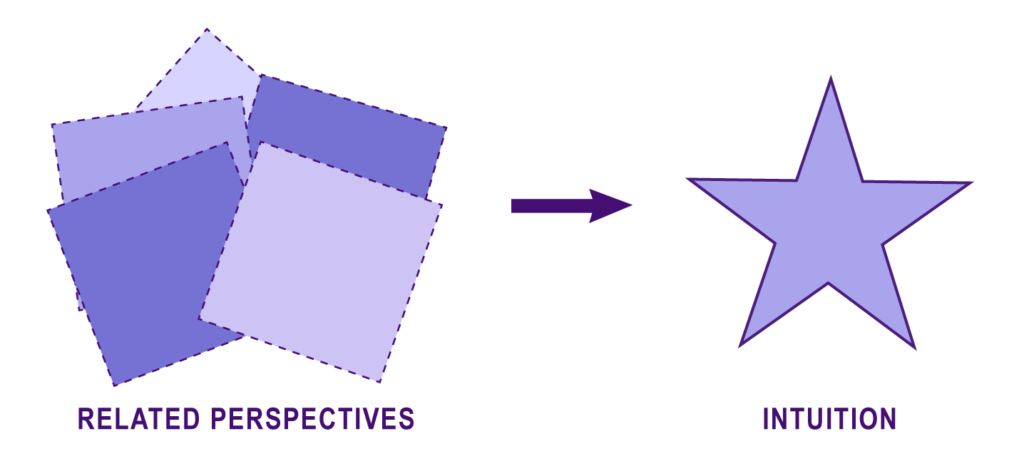
By intertwining our perspectives we cultivate intuition.
Intuition informs us how to reorient our stories for accuracy through insight. The more we practice, the more acquired our insight becomes. Just as thoughtfulness enlightens our perspectives, insightfulness clarifies our intuitions.
Conceptual Framework
When we discover a harmonious connectedness across our intuitions to articulate a fabric of understanding, we begin to engage in conceptual development. Through thoughtful insightfulness — rearranging our perceptions, perspectives and intuitions to synchronize with reality — we are able to nurture a more objective and realistic framework of understanding.
The stories we tell become full, robust, integrated and inspired; they reliably help us discover alternative pathways for navigating the situations we find ourselves in. We comprehend more completely what we seek to understand, by reconstructing reality within an enlivened conceptual framework.
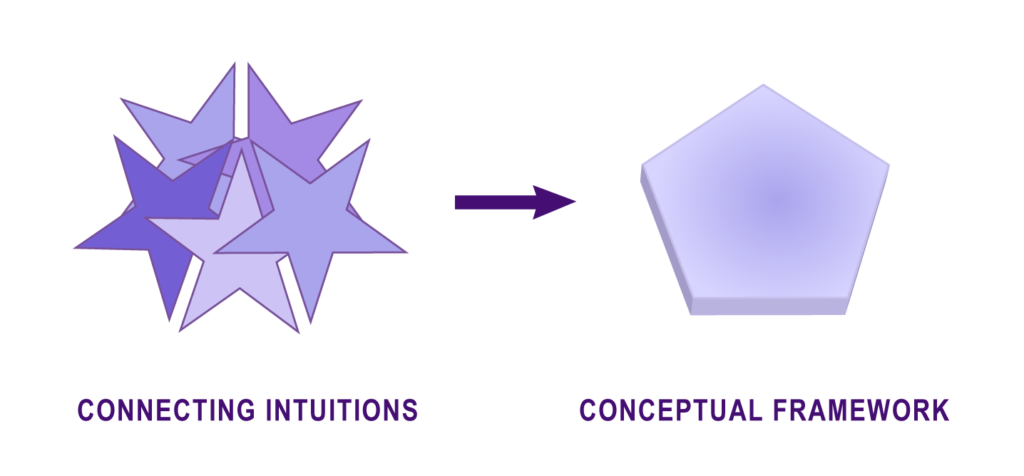
By discovering ways to connect our intuitions, we engage in conceptual development.

